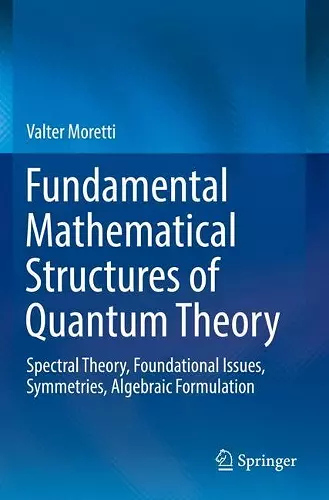Fundamental Mathematical Structures of Quantum Theory
Spectral Theory, Foundational Issues, Symmetries, Algebraic Formulation
Format:Paperback
Publisher:Springer Nature Switzerland AG
Published:14th Aug '20
Currently unavailable, and unfortunately no date known when it will be back

This textbook presents in a concise and self-contained way the advanced fundamental mathematical structures in quantum theory. It is based on lectures prepared for a 6 months course for MSc students. The reader is introduced to the beautiful interconnection between logic, lattice theory, general probability theory, and general spectral theory including the basic theory of von Neumann algebras and of the algebraic formulation, naturally arising in the study of the mathematical machinery of quantum theories. Some general results concerning hidden-variable interpretations of QM such as Gleason's and the Kochen-Specker theorems and the related notions of realism and non-contextuality are carefully discussed. This is done also in relation with the famous Bell (BCHSH) inequality concerning local causality.
Written in a didactic style, this book includes many examples and solved exercises.The work is organized as follows. Chapter 1 reviews some elementary factsand properties of quantum systems. Chapter 2 and 3 present the main results of spectral analysis in complex Hilbert spaces. Chapter 4 introduces the point of view of the orthomodular lattices' theory. Quantum theory form this perspective turns out to the probability measure theory on the non-Boolean lattice of elementary observables and Gleason's theorem characterizes all these measures. Chapter 5 deals with some philosophical and interpretative aspects of quantum theory like hidden-variable formulations of QM. The Kochen-Specker theorem and its implications are analyzed also in relation BCHSH inequality, entanglement, realism, locality, and non-contextuality. Chapter 6 focuses on the algebra of observables also in the presence of superselection rules introducing the notion of von Neumann algebra. Chapter 7 offers the idea of (groups of) quantum symmetry, in particular, illustrated in terms of Wigner and Kadison theorems. Chapter 8 deals with the elementary ideas and results of the socalled algebraic formulation of quantum theories in terms of both *-algebras and C*-algebras.
This book should appeal to a dual readership: on one hand mathematicians that wish to acquire the tools that unlock the physical aspects of quantum theories; on the other physicists eager to solidify their understanding of the mathematical scaffolding of quantum theories.
“Moretti’s text is a fun and insightful tour through analytic aspects of quantum mechanics. In particular, it is an excellent resource for the spectral theory of unbounded operators. … This reviewer would find the text most useful as a supplement to a second course in functional analysis based on any of the more classic graduate texts. It is also well suited to self-study by graduate students/researchers transitioning to mathematical physics.” (Ryan Grady, MAA Reviews, January 6, 2023)
“The book can be read on the basis of an elementary knowledge of Hilbert spaces and measure theory. For mathematicians, it can be used as an introduction to Quantum Mechanics and a detailed guide to the associated mathematical problems; for the reader familiar with Quantum Mechanics, it provides an extensive insight into the mathematical discussion of its structural and foundational issues.” (Giovanni Morchio, Mathematical Reviews, June, 2020)
ISBN: 9783030183486
Dimensions: unknown
Weight: unknown
337 pages
2019 ed.